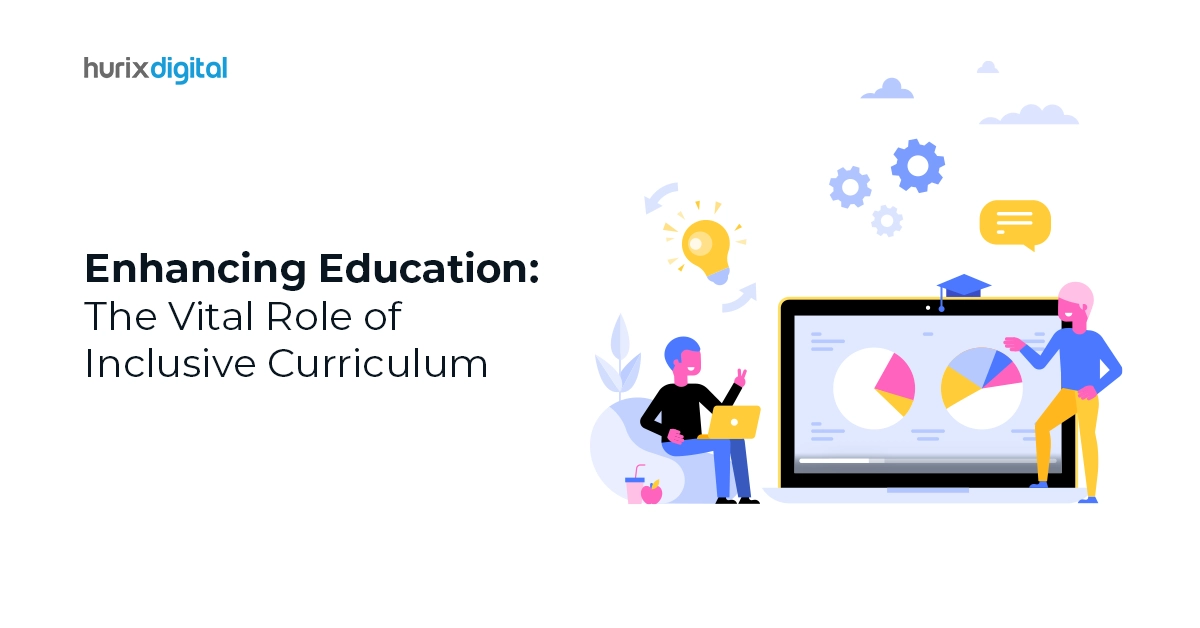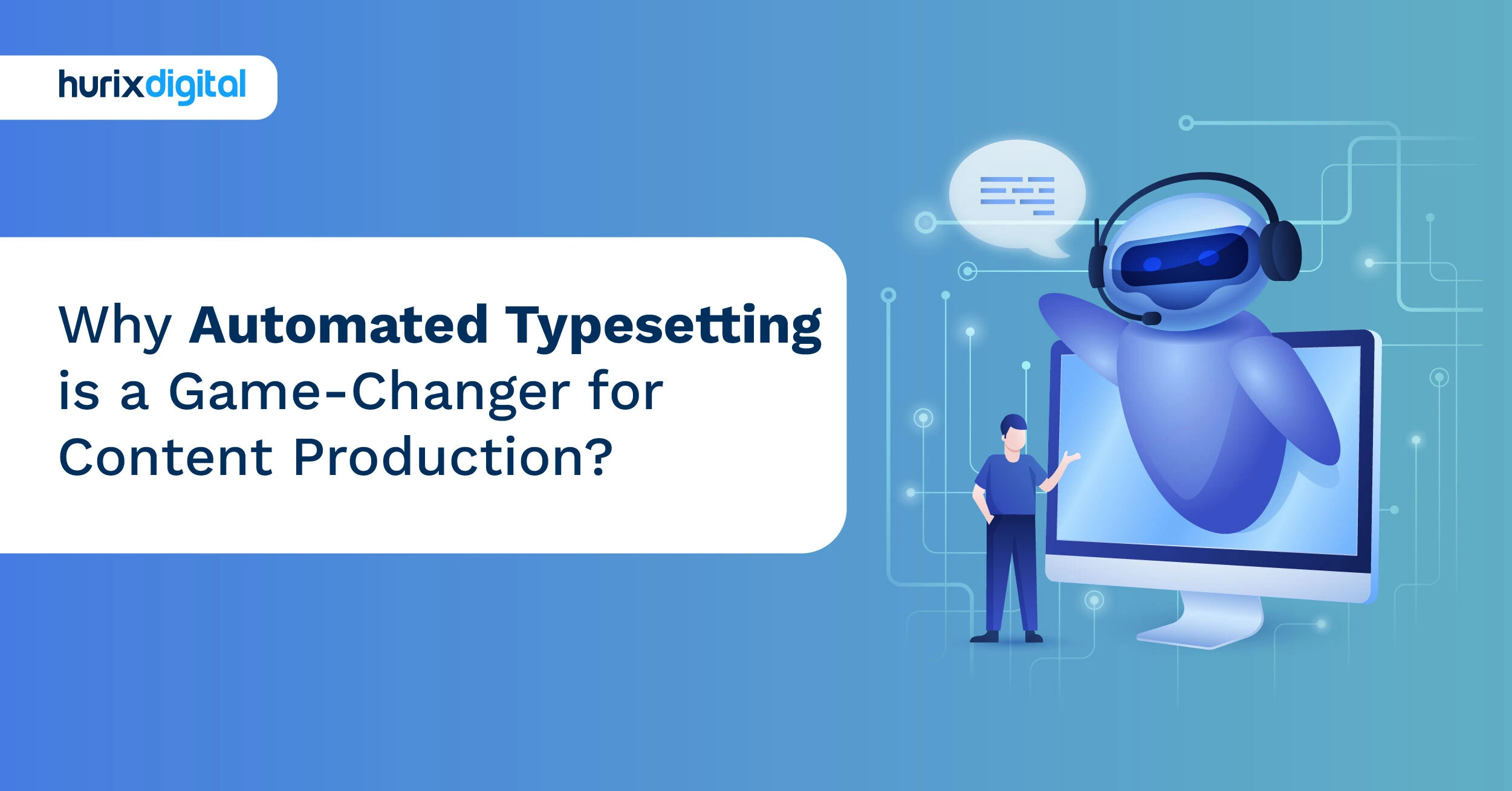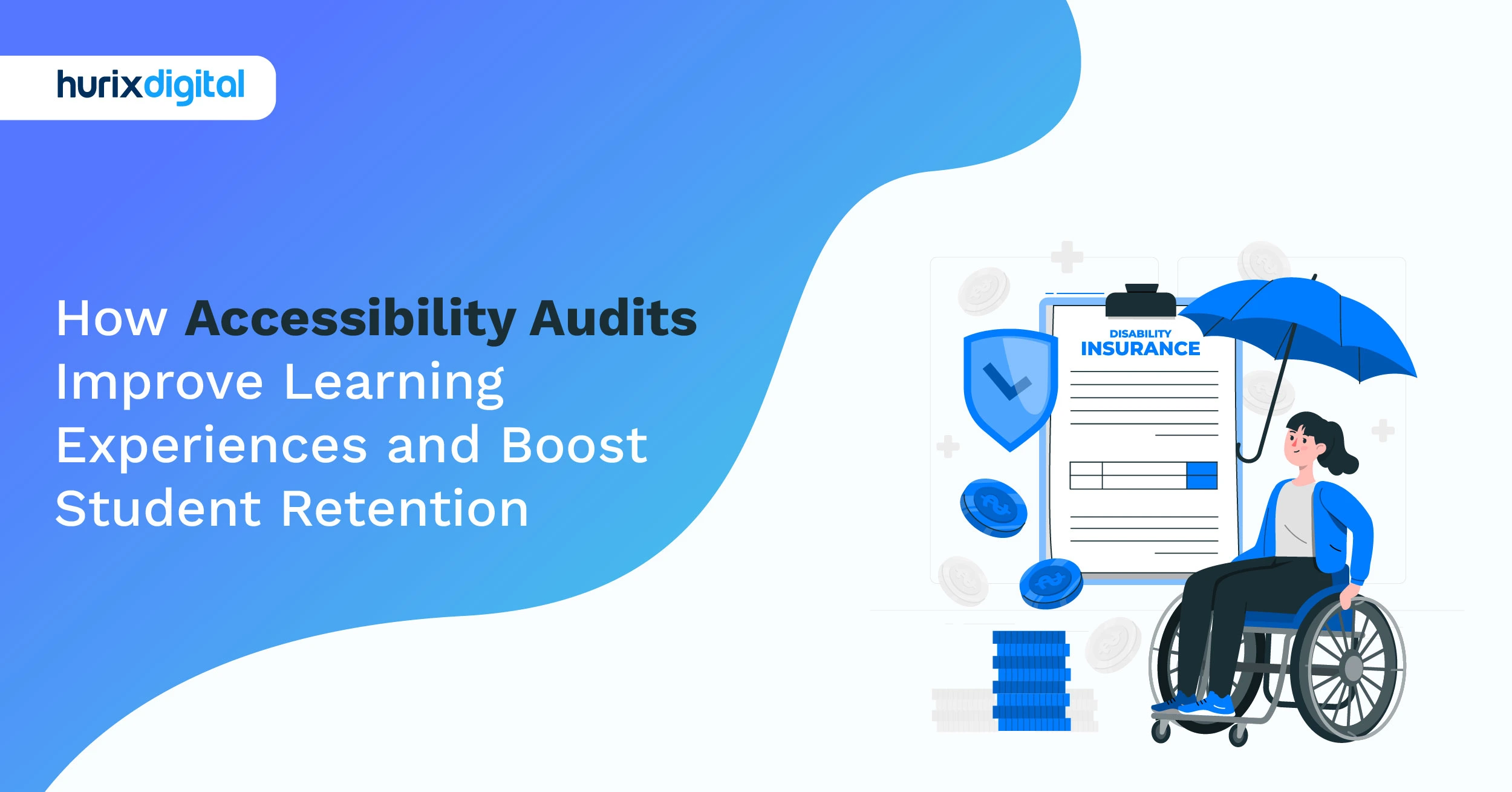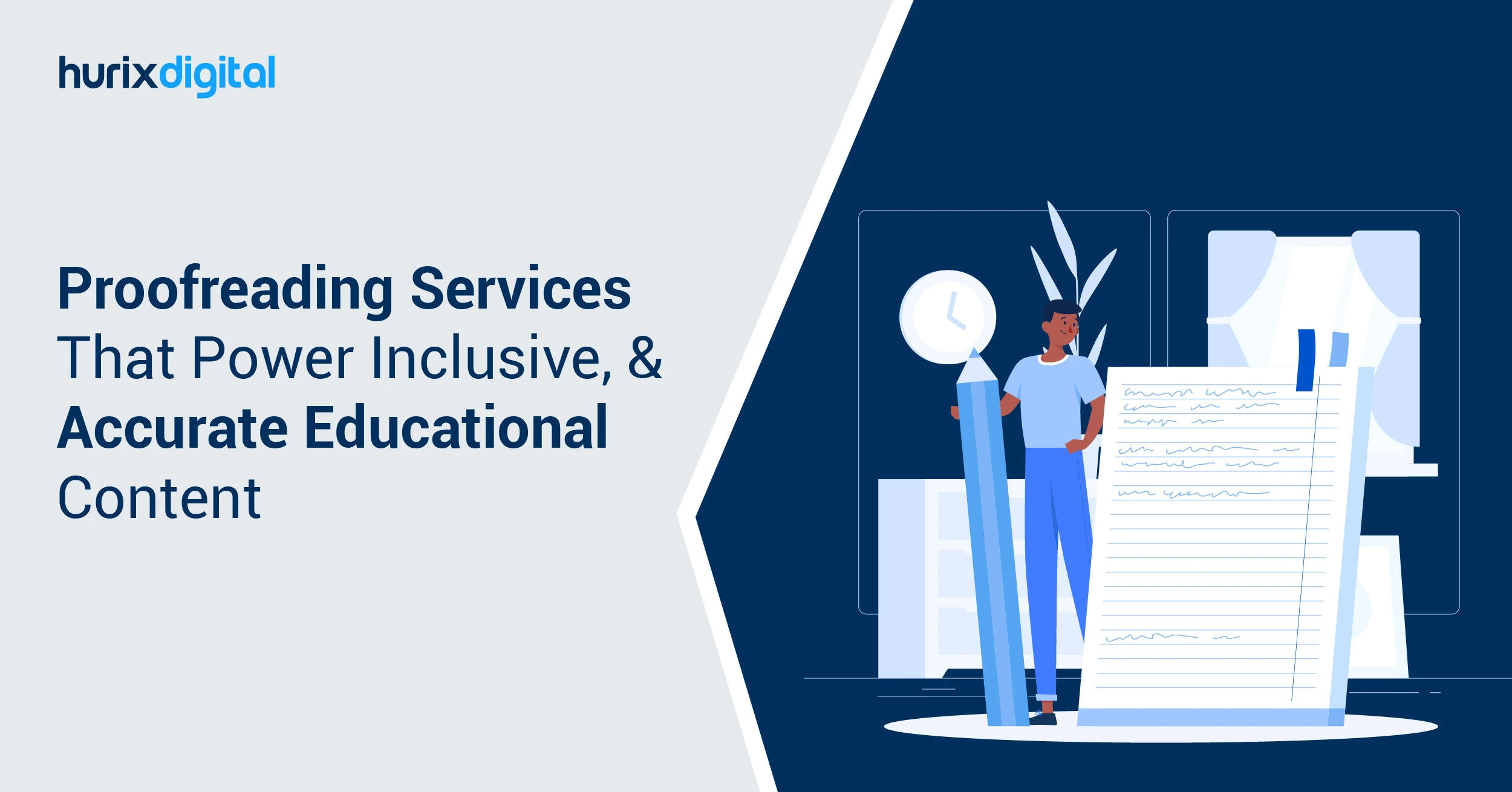
Proofreading Services That Power Inclusive, & Accurate Educational Content
Summarize with:
In education, knowledge is distributed depending on the correctness, clarity, and coherence of educational materials. To ensure this, proofreading services play a crucial role in refining textbooks, scholarly papers, and internet resources—ensuring they are of the highest caliber possible.
Proofreading standards are critical in ensuring this material meets the highest quality criteria. Following strict proofreading standards helps teachers, researchers, content providers, and others improve the accuracy and dependability of their offerings.
This article explores how proofreading rules support the general learning process and their relevance in instructional materials.
Table of Contents:
- The Importance of Proofreading in Educational Content
- The Role of Professional Proofreading Services
- Enhancing Research Papers with Proofreading Standards
- How to Ensure Inclusivity in Learning Materials?
- Identify Your Audience
- Avoid Generalizations and Judgments
- Check for Biases and Stereotypes
- Be Conscious of Your Tone
- Keep Your Content Accessible
- Make Your Content Engaging
- Inclusive Design
- Get Feedback
- Avoid Using Derogatory Terms
- Be Age-Inclusive
- Be Sensitive to People with Disabilities
- Be Racially Aware
- Revise Your Content
- Be Consistent
- What are the Benefits of Multilingual Proofreading for Educational Content?
- Tips for Multilingual Proofreading for Educational Content
- The Impact of Proofreading on Educational Outcomes
- Best Practices for Proofreading Educational Content
- Conclusion
The Importance of Proofreading in Educational Content

As the last stage of the content creation process, copyediting and proofreading fix mistakes to ensure that the material is error-free, concise, and clear. In instructional materials, the demand for accuracy is even stronger. Here are some reasons why proofreading standards are important for educational content.
1. Accuracy and Clarity
Proofreading standards ensure error-free instructional materials with great impact, preventing any possibility of confusing or misleading students. Following these guidelines helps content producers make sure their work precisely and clearly expresses concepts.
2. Credibility
Errors in scholarly books compromise the legitimacy of the author and the material. Academic proofreading and editing services play a critical role in maintaining the integrity of educational materials and guaranteeing that they meet the highest quality standards.
3. Consistency
Consistency in vocabulary, style, and formatting is vital for educational content. Proofreading methods ensure consistency among papers, therefore increasing their accessibility and simplicity.
The Role of Professional Proofreading Services
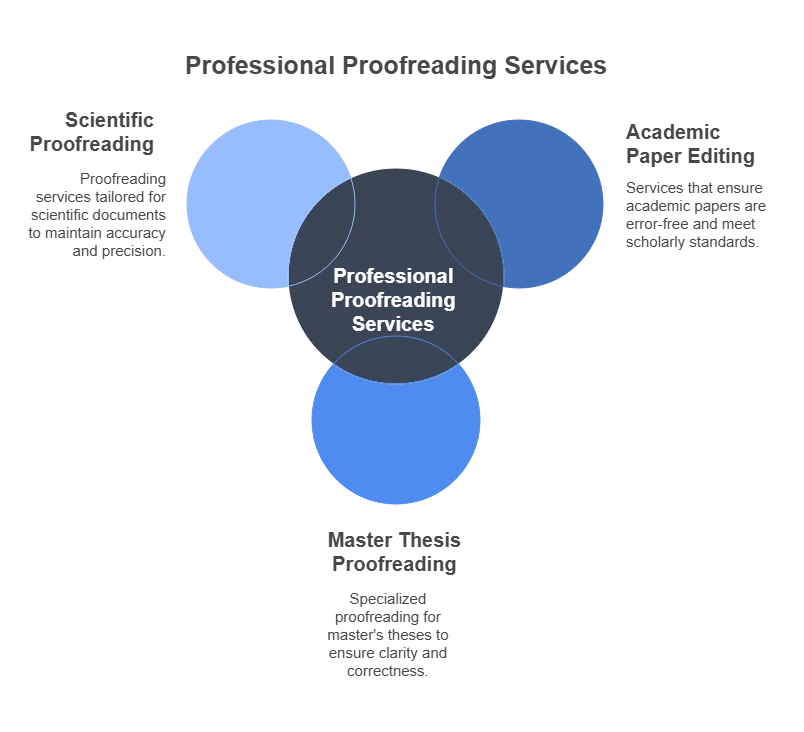
Professional academic proofreading and academic editing services specialize in reviewing and enhancing academic papers, ensuring they meet the standards required in learning environments.
1. Academic Paper Editing Services
Academic paper editing services aim to enhance the quality of scholarly works such as research papers, essays, and dissertations. Their main concerns include grammar mistakes, better sentence construction, and making sure the material follows academic standards.
2. Master Thesis Proofreading
Writing a master’s thesis is a major academic accomplishment; hence, it is important to guarantee its quality. Master thesis proofreading services offer a complete review of the work with an eye toward language, punctuation, formatting, and academic standards.
3. Scientific Proofreading
The specialist service, scientific proofreading, focuses on ensuring that scientific material follows scientific writing standards and is error-free. It includes checking conformity to publication standards, data presentation, and difficult vocabulary.
Enhancing Research Papers with Proofreading Standards
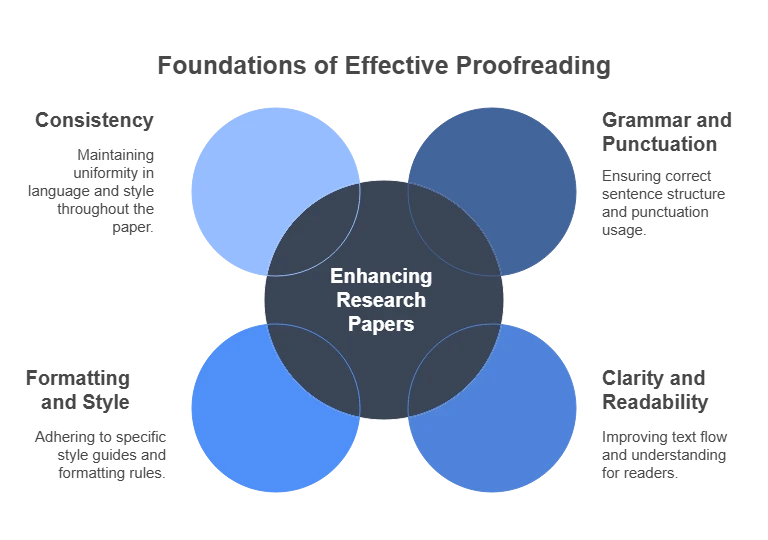
Research papers, which are a pillar of academic activity, must be of the highest quality. Making sure these materials are well-written, clear, and error-free depends mostly on proofreading research papers. The procedure consists of numerous important stages:
1. Grammar and Punctuation
Around 16% of doctoral students believe that grammar is one of the areas with which they have difficulty. Proofreading makes things easier for them because it ensures that the work is devoid of grammatical and punctuation mistakes, undermining the text’s clarity and professionalism.
2. Clarity and Readability
Proofreading methods make the work more readable, ensuring that difficult concepts are succinctly and clearly articulated.
3. Formatting and Style
Academic writing depends heavily on following particular formatting and style rules. Whether in APA, MLA, Chicago, or another style, proofreaders ensure that the paper complies with the referencing style.
4. Consistency
Proofreading ensures consistency in language, style, and formatting throughout the document, allowing readers to follow every argument and idea presented.
How to Ensure Inclusivity in Learning Materials?

Ensuring inclusivity in learning materials requires a thoughtful approach to language, tone, and representation. It’s about being intentional in your choices and recognizing the diversity of your audience.
Here are the top tips:
1. Identify Your Audience
Before you get down to proofreading, be clear about your audience and their views, interests, and expectations. That way, you can ensure that your content is respectful and accessible to them. Tools like surveys and analytics can help you understand your audience better.
2. Avoid Generalizations and Judgments
Avoid using terms that imply a norm or standard, such as “normal” or “regular.”. Words that imply a value judgment, like “good,” “correct,” and “bad”,” should also be used carefully.
Use qualifiers like “some,” “often,” and “many” to avoid using general terms like “always” and “everyone.” Whenever possible, substitute gender-neutral words like “they” or “them” for gendered pronouns like “he” or “her.”
3. Check for Biases and Stereotypes
Biases and stereotypes are perceptions based on limited or inaccurate information. These can be explicit or implicit and positive or negative.
To ensure that your content is free of bias and stereotypes, be careful about your assumptions and try to maintain a sensitive tone. Be mindful of the sources you rely on and try to ensure that they have diverse perspectives and don’t all have the same biases.
In order to prevent perpetuating traditional gender roles and guarantee that your material is inclusive of all genders, you should also take care to avoid occupational preconceptions, such as referring to doctors as “he” and nurses as “she.”
4. Be Conscious of Your Tone
Your tone is how you express your attitude and emotions. A respectful and not condescending tone is more likely to reach your audience. When you proofread your text, look for tone. Avoid vague or extreme terms such as “ridiculous” and instead use more moderate language like “it has some drawbacks.””
5. Keep Your Content Accessible
Ensure that people with different abilities and needs can understand your content. This will also give you a wider target audience. One way to do this is to use clear and simple language and avoid jargon.
Breaking up your content into points and lists can also help make it more readable and easier to scan.
6. Make Your Content Engaging
The likelihood that the reader will understand and retain the instructional material increases with its level of engagement. To enhance my writing, I should include multimedia such as graphics, audio, video, and photographs.
7. Inclusive Design
Including captions, transcripts, alt text, and descriptions is one way to make your design inclusive. This can help people with visual, auditory, or cognitive disabilities.
Contrast, color, and font size can also help make the content more readable and visually engaging.
Finally, a flexible website design with intuitive navigation can help ensure that the content molds to different devices and screens without losing its flow.
Proofreading and editing services can also check for design accessibility.
8. Get Feedback
Feedback is a great way to improve your content and spot errors or biases that you might have missed.
Be open to feedback from others that could challenge your perspective and bring in divergent input. You can seek feedback from different sources, such as peers, experts, mentors, or even your target audience. It’s worth seeking feedback from diverse sources so that you get exposure to a range of perspectives.
9. Avoid Using Derogatory Terms
Outdated, derogatory, and insensitive terms like “handicapped” should be avoided. Instead, respectful terms should be used that are considerate and not offensive. Hiring academic editing services can help you avoid inappropriate language.
10. Be Age-Inclusive
When speaking of older people, avoid terms like “old people” or “the elderly” because they may be interpreted as demeaning and suggest weakness.
Think about your target audience’s age range, including whether they are working past a certain age, such as 65 or 70, or are approaching retirement. Exercise caution when making generalizations about younger age groups, such as millennials, to prevent creating stereotypes.
You may make sure that your content is appropriate and interesting for all age groups by using age-inclusive language. Using expert editing and proofreading services might help you stay sensitive to various demographics.
11. Be Sensitive to People with Disabilities
When you speak of people with impairments, use compassion. Words like “blind,” “deaf,” and “disabled” are occasionally taken as derogatory. Refrain from using terms like “sufferer,” “wheelchair-bound,” or “mentally handicapped” that could come across as victimizing or passive.
Instead, speak in a way that respects each person’s identity and experience by using inclusive language. Say “person with a disability” instead of “disabled person” to highlight the individual, and use phrases like “uses a wheelchair” rather than “wheelchair-bound.” This strategy encourages inclusivity and respect in your writing.
12. Be Racially Aware
Many racial and ethnic groups have preferences for the names they would like to be called, such as Native Americans or First Nations. For instance, some American citizens prefer to be referred to as African Americans rather than black people.
Some consider the term “Jews” offensive. Try to find out what are the preferred terms. Avoid outdated terms such as “Orientals” or “Chinamen”, which have derogatory connotations. You can refer to an inclusive language guide to help you keep your text from sounding prejudiced.
13. Revise Your Content
The final step of proofreading is to revise your content based on the edits you made and the feedback you received. Proofreading for inclusivity is a continuous process.
When revising the content, check the language and tone, and keep an eye out for assumptions or generalizations. You can also employ proofreading services to do the final editing round.
14. Be Consistent
Consistency helps keep your educational content professional. Stick to the same pronouns and terms to avoid confusing readers. To ensure consistency, you can consider AI proofreading.
If you call men by their surname, call women by their surname as well. Calling women by their first name could come across as patronizing.
What are the Benefits of Multilingual Proofreading for Educational Content?
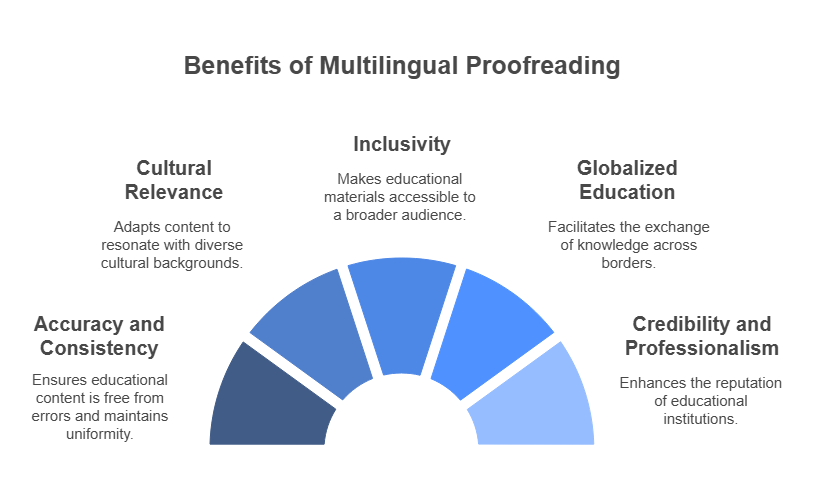
Here’s a breakdown of the top benefits that multilingual proofreading offers in educational content creation:
1. Accuracy and Consistency
Translating educational material is more than just converting one language to another. It requires a thorough understanding of the subject matter and clear communication.
Multilingual proofreading helps you meticulously check translated context against the original material to ensure that key concepts and information are accurately portrayed. It also helps ensure that the instructional style is consistent across different languages.
2. Cultural Relevance
Multilingual proofreading enables learners from diverse backgrounds to appreciate the material. It ensures that the content is culturally relevant, whether examples or cultural references. This means learners can connect with the content better and are more likely to engage with it and retain what they learn.
3. Inclusivity
Multilingual proofreading helps avoid stereotypes or offensive material that could put off learners or make them feel alienated. By adapting to different cultural backgrounds, it makes learning more inclusive.
4. Globalized Education
Multilingual proofreading helps educational content remain accessible to learners from different countries globally. As educational institutions and ed-tech businesses look to access a global audience, multilingual proofreading helps them make their content accessible to diverse learners. Producing high-quality global content helps them build their brand at an international level.
5. Credibility and Professionalism
Well-proofread content boosts the credibility of an educational institute or organization and imbibes a sense of professionalism. This builds trust and confidence among learners and other stakeholders.
Educational content that is free from translational errors and sounds natural in the translated language goes a long way. It upholds the brand value of the institution or organization.
Tips for Multilingual Proofreading for Educational Content

Here are some essential tips for effective multilingual proofreading of educational content:
1. Choose the Right Tools
Picking the right tools is essential, particularly for proofreading academic papers. Some tools you may need include a dictionary, a spell-checker, and a grammar-checker for each language. You can also use online tools for this, but make sure to double-check the meaning and context of the translated content so that it captures the style of the language.
Translation and AI proofreading tools can be useful but don’t solely rely on them. They can help maintain consistency and accuracy, but human review and proofreading services can only understand the nuances and subtleties of the language.
2. Know Your Audience and Purpose
It’s important to know your audience so that you can adapt tone, style, and vocabulary accordingly. Educational content for young learners will need to use simpler language and explanations than content for advanced students or professionals. This helps you keep the content accessible and engaging. Even if you hire professional proofreading services, you will have to convey information about your target audience.
3. Cultural Awareness
Cultural context influences how content is understood. Being aware of the cultural background of your learners can help you tailor the content accordingly. You can edit idioms and cultural references so that they are easy to grasp. This helps avoid misunderstandings and allows learners to connect with the content better. The best proofreading services take cultural context into account.
4. Compare and Contrast the Text
Comparing and contrasting the original text with its translations is an important step in multilingual proofreading for educational content. It helps ensure that the text is correctly translated.
Check that key concepts are correctly conveyed and be mindful of technical terms. For instance, if the content is translated into Spanish as well as German, you can compare and contrast through Spanish proofreading and German proofreading.
Comparing and contrasting also helps you assess how well cultural nuances are addressed in each translation and whether cultural references and examples are appropriate, whether it’s English proofreading or multilingual proofreading.
5. Read Aloud and Listen
Reading aloud can help you spot errors and also give you a sense of how the language flows. In this regard, consider using a text-to-speech tool to listen to the content in different languages. This helps check the pronunciation and rhythm of the texts.
Additionally, focus on how natural the language sounds and whether it effectively conveys the intended message. Listening can reveal awkward phrasing or inconsistencies that might not be as obvious when reading silently. This step ensures that the content is both clear and engaging for the learners.
6. Review and Revise
This step ensures that you have corrected all the mistakes and also checks the quality of the content. You can have a checklist of requirements to help you keep track. It’s important to scrutinize every aspect of the content during this stage, like terminology, punctuation, grammar, and formatting. You can also make sure that nothing is lost in translation.
In the revision phase, you can refine the language to enhance readability and make adjustments based on feedback. The goal should be to preserve the original meaning while adapting the text to be culturally and contextually relevant for the learners. For academic content, you can consider hiring academic editing services.
7. Seek Feedback
You can seek feedback from peers, native speakers, or experts in the target language. Native speakers bring useful insights into cultural nuances and ways of speaking. Their feedback can help adapt the tone and style to suit the local audience better and ensure that the content is relatable, relevant, and easy to grasp.
You can also hire academic proofreading services or a thesis proofreading service if you need help with academic writing.
8. Test with Target Audiences
The best way to assess multilingual educational content is to test it on a target audience after academic proofreading. This is a great way to get feedback on how well the content is received and understood. You can also gauge how the audience responds to different parts of the content and how engaged they are.
In this regard, chief academic officers and educational content creators should prioritize testing with target audiences to ensure the material resonates well and meets the learning objectives. By incorporating feedback from actual learners, you can refine the content to enhance its effectiveness and relevance across different languages and cultures.
The Impact of Proofreading on Educational Outcomes
The quality of instructional materials directly impacts learning results. When content is devoid of mistakes and presented correctly, students can concentrate on understanding the topic instead of battling confusing or false information.
- Improved Comprehension: Well-proofread instructional materials help students grasp difficult ideas better. Clear and easily accessible content is critically dependent on proofreading standards.
- Enhanced Learning Experience: Mistakes in instructional materials could cause misinterpretation and disrupt the learning process. Following proofreading guidelines helps teachers provide a more seamless and successful classroom environment.
- Confidence in Learning Materials: Well-proofread materials will inspire more confidence in both teachers and students. Knowing that the material is accurate and trustworthy allows students to interact with it more fully.
- Higher Academic Performance: Quality instructional materials lead to higher academic success. Students who have access to error-free resources are more likely to excel in their academics.
Best Practices for Proofreading Educational Content
Optimal standards in proofreading guarantee the highest quality of instructional materials. These techniques promote clarity, help spot and fix mistakes, and raise the overall quality of the content.
- Multiple Proofreading Passes: An optimum number of proofreading passes helps find mistakes that would be missed in one pass. Every pass can concentrate on many facets, including formatting, grammar, and punctuation.
- Reading Aloud: Reading the material aloud helps identify run-on sentences, odd language, and other issues that are not clear-cut when reading silently.
- Using Proofreading Tools: Digital technologies can assist proofreaders by pointing out grammar and spelling errors. However, to achieve the best results, they should work in tandem with manual proofreading.
- Taking Breaks: Proofreading requires attention to detail and concentration. Between proofreading sessions, breaks help to keep focus and lower the possibility of error omission.
- Peer Reviews: Having another person check the material might offer a different viewpoint and help find mistakes that the original author may have missed.
Conclusion
Proofreading standards are established to improve the caliber of instructional materials. Proofreading is necessary in the content generation process to ensure consistency and legitimacy and enhance clarity and correctness.
Maintaining these standards depends critically on expert academic proofreading, academic editing, and specialist proofreading for scientific and research publications.
Following the best standards and overcoming shared obstacles will help content authors create top-notch instructional tools that support efficient learning and academic success.
Hurix Digital offers an unmatched solution for academic proofreading needs. We ensure that your material supports the professionalism and credibility of your brand, inspiring confidence in your clients.
Book a call today to get started!
Summarize with:

Vice President – Content Transformation at HurixDigital, based in Chennai. With nearly 20 years in digital content, he leads large-scale transformation and accessibility initiatives. A frequent presenter (e.g., London Book Fair 2025), Gokulnath drives AI-powered publishing solutions and inclusive content strategies for global clients
 Upcoming Masterclass | Build an Army of Brand Evangelists using Training & Development | November 20th, 8:30 AM PDT | 11:30 AM EDT | 10:00 PM IST
Upcoming Masterclass | Build an Army of Brand Evangelists using Training & Development | November 20th, 8:30 AM PDT | 11:30 AM EDT | 10:00 PM IST

